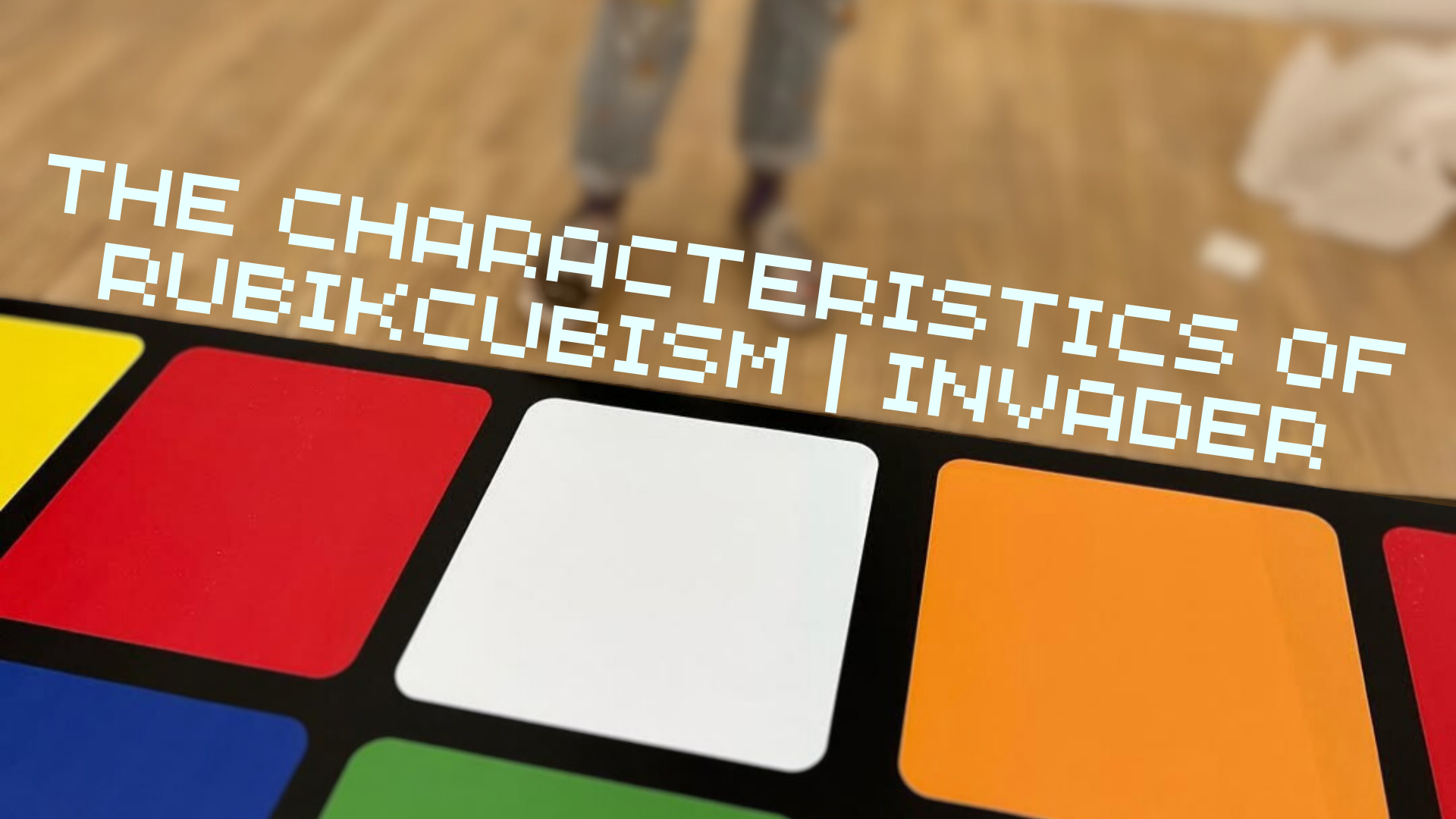Is Invader Commenting on the state of Current Society?
read more
Invader, the masked street artist known for his pixelated mosaics, has captured the imagination of art lovers and casual observers alike. While his work is often celebrated for its playful and nostalgic qualities, a question that frequently arises is whether his art carries a political message. In this blog, we explore the elements of Invader's work to determine if his art has a political dimension.
The Nature of Street Art
Using street art as a medium can mean many things. By its very nature, it exists in the public domain. No one knows whether it’s simply for the view or is a form of social commentary. Artists may use urban environments as their canvas to communicate messages that might challenge, critique, or reflect societal norms and issues. This context makes it essential to consider whether Invader’s work aligns with these characteristics.
Invader’s choice of location for his mosaics can be seen as a subtle form of commentary, not on politics, but on the current treatment of art. By placing his art in prominent and often unexpected public spaces, he challenges the conventional boundaries of art and questions what constitutes a legitimate space for artistic expression. This act alone can be interpreted as a political statement about accessibility and the democratization of art.
It is all about liberating Art from its usual alienators that museums or institutions can be.
-Invader
Invader’s two most recent mosaics in Paris (October 2024)
Analyzing Invader’s Subjects
One of the most distinctive features of Invader's work is his use of characters from classic video games and pop culture. These subjects are often seen as apolitical, primarily evoking nostalgia and playfulness.
HK_188
Invader frequently adapts his work to reflect local cultures and histories. While not overtly political, this aspect of his work does engage with cultural identity and heritage.
LJU_36
Invader once added a harmless twist to Mao Zedong, the Former President of the People's Republic of China, with a mustache and a red cap, resembling Mario from The Mario Bros in the Rubikcubism style. This piece is at the Wipe Out exhibition in Hong Kong. It doesn’t have a meaning behind it, just a playful addon to pay tribute to the past president, though some may be offended due to the lack of respect.
Mao Zedong Portrait
Subtle Political Commentary?
The core concept of invasion in Invader’s work can be interpreted in various ways. On one level, it refers to the playful takeover of urban spaces by pixelated characters. On another level, it can symbolize broader themes of invasion and occupation, prompting viewers to reflect on issues related to territoriality and control. This duality adds a layer of complexity to his art, allowing for political interpretations.
By placing his art in public spaces, sometimes without explicit permission, Invader engages in a form of resistance against regulatory frameworks that govern urban environments. This act can be seen as a critique of the commercialization and privatization of public spaces. In this sense, his work aligns with the broader philosophy of street art as a form of reclaiming public space for creative and free expression.
At the end of the day, it’s just personal interpretation.
Art critics have debated the political dimensions of Invader’s work, with some arguing that his art lacks the overt political messaging seen in the works of other street artists like Banksy. However, others suggest that the subtlety of Invader’s political commentary is what makes it powerful. By embedding his messages within familiar and benign imagery, he invites viewers to engage with political ideas in a more accessible and less confrontational way.
PA_1336
Self Defense
Below is from Invader’s official website on his response to whether there is a message behind his project:
“I don’t have a message to deliver to the world and I am not openly political. The way I operate is per se already political as I intervene illegally for 99% of my installation. I am into artistic experimentation rather than political opposition. I like the concept of decontextualizing art to bring it to the streets, to surprise everyday people, while constantly creating new pieces. This project, I hope, will leave a print not only on the streets but also in the minds.”
Related Topic: The Motive of Invader
Conclusion
While Invader’s art may not be explicitly political in the way that some street art is, it undeniably engages with themes that have political implications. His choice of locations, subjects, and the very act of placing art in public spaces contribute to a broader conversation about the role of art in society, the accessibility of creative expression, and the reclamation of public spaces. Whether you view his work as political or not, there’s no denying that Invader has made a significant impact on the world of street art, challenging viewers to see the world and the spaces around them in new and thought-provoking ways.
All Rights Reserved
~
We do not own any copyrights to the photos used
~
All Rights Reserved ~ We do not own any copyrights to the photos used ~



































